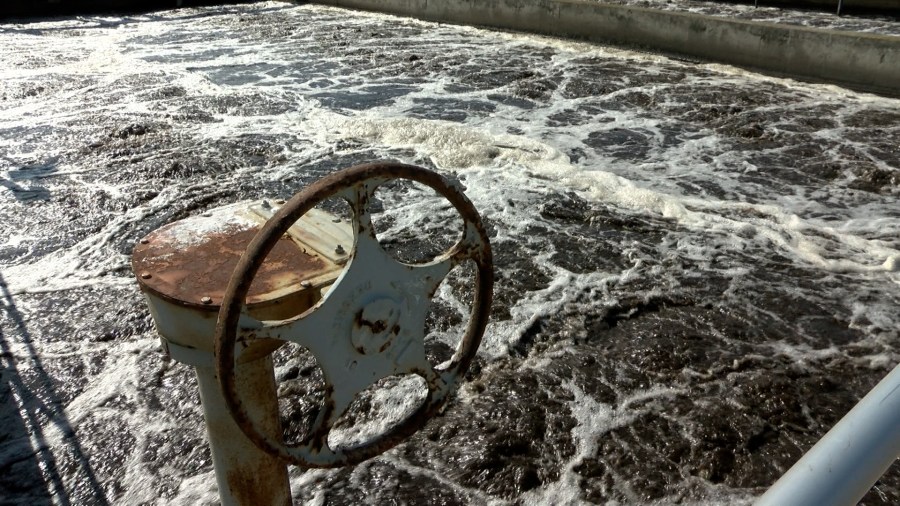SIOUX FALLS, S.D. (KELO) — Sioux Falls discharged partially treated wastewater in the Big Sioux River at a rate of about one million gallons per hour over 30 hours on June 21 and June 22 because of historic rainfall and flooding, a city official said.
Although the total discharge of partially treated sewage was 32 million gallons it’s only a fraction of what was flowing through the river during that time, Jesse Neyens said in an email to KELOLAND News. Neyens is the regulatory compliance manager for water reclamation for the city of Sioux Falls.
Based on estimates, the partially treated wastewater was .31% of the 8.854 billion gallons of water per day in the river’s flow rate, Neyens said. That is less than half of 1% of the flow.
“The decision to discharge wastewater was made to protect private property and our community’s sanitary sewer infrastructure,” Neyens said in the email.
Although it discharged partially treated wastewater into the river, the city won’t likely be fined for it, Neyens said.
“When historic rainfall events causing widespread flooding like we experienced in June, (the Environmental Protection Agency) and (South Dakota Department of Agriculture and Natural Resources) will typically not access fines for direct discharges that are necessary to protect the infrastructure of the wastewater treatment system,” Neyens said in the email.
The city of Vermillion needed to discharge wastewater into the Vermillion River after severe flooding broke the city’s three main force pipes in its wastewater treatment system.
Vermillion mayor Jon Cole told KELOLAND News on July 1 that the city was discharging about 1.2 million gallons of sewage per day into the Vermillion River.
The city’s wastewater treatment plant handles a flow of about two million gallons per day and peak flows of up to four million gallons per day, according to the city’s website.
City employees completed a temporary sewer line connecting the main lift No. 2 and main lift No. 1, the city announced on July 5. Construction of a temporary bridge to take sewage from main lift No. 1 to the wastewater plant was expected to start on Monday of this week.
Plans for a permanent solution are expected this winter.
Sioux Falls doesn’t need a permanent solution as the discharge was a temporary action.
“The wastewater that was discharged to the river was diluted from a significant amount of inflow and infiltration into the sanitary sewer system and partially treated in the city’s equalization basins,” Neyens said in the email.
The city notifies the South Dakota Department of Agriculture and Natural Resources (DANR) within 24 hours of a discharge event, Neyens said. The city then follows DANR requirements for reporting after an event.


